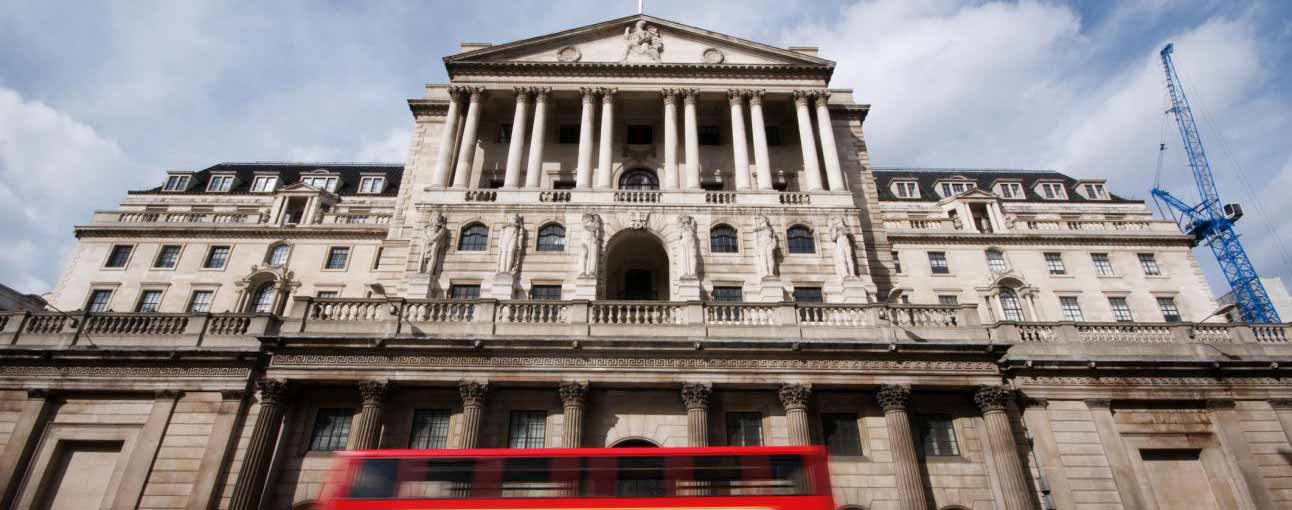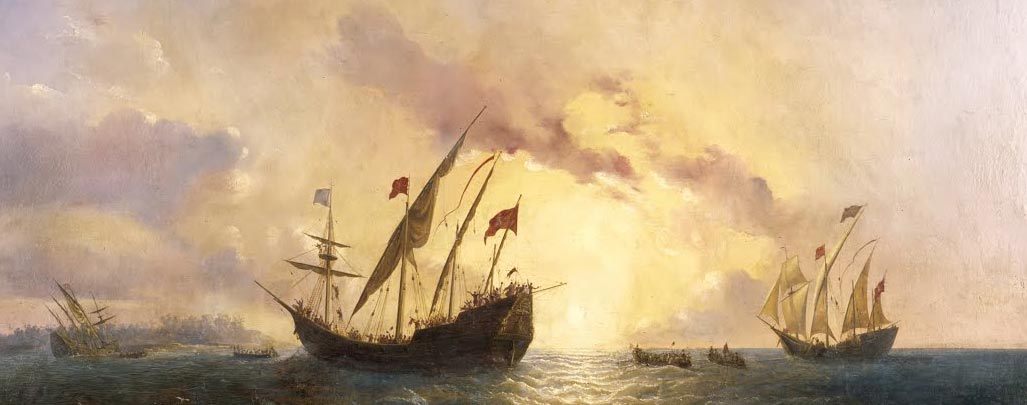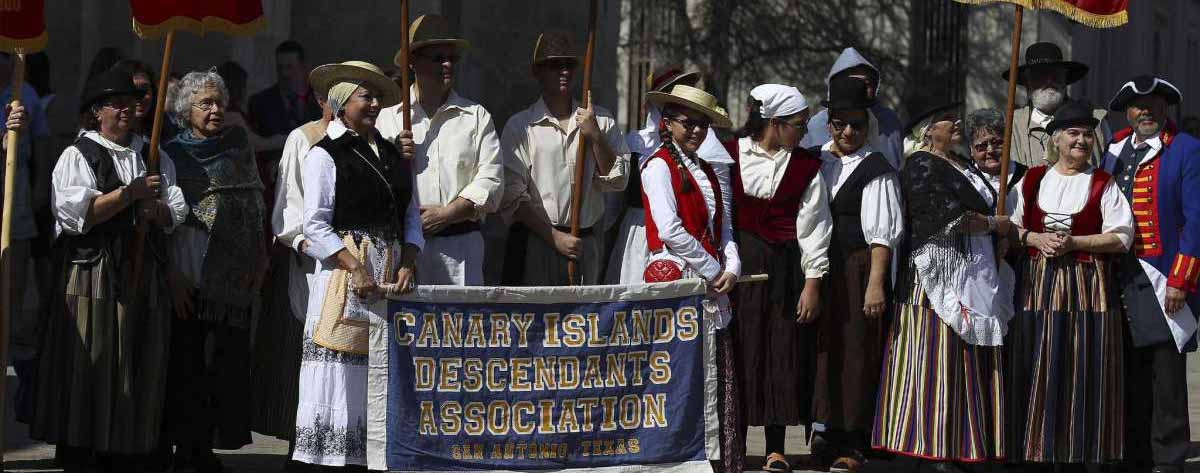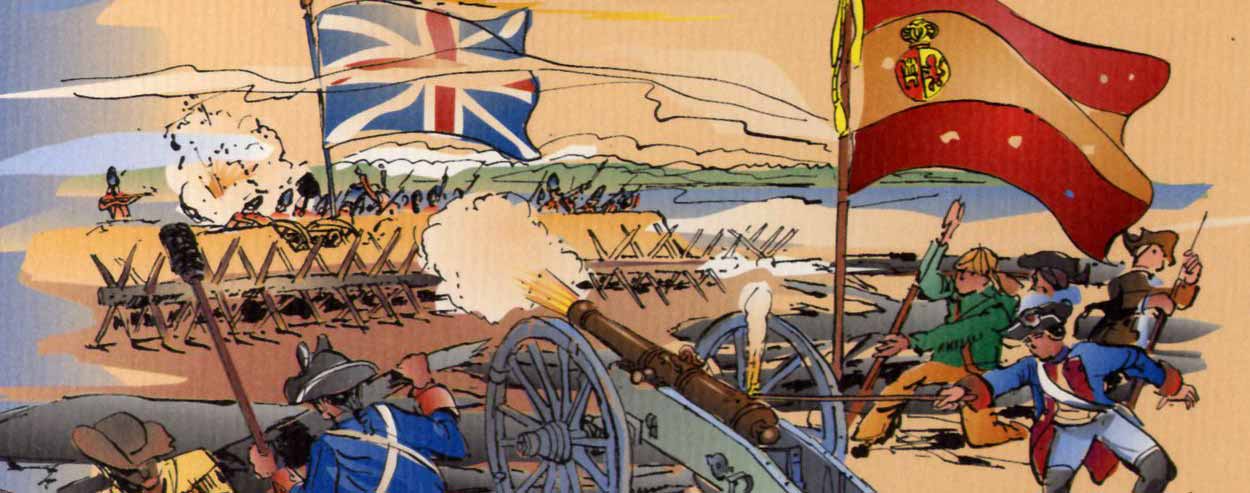Source:Hispanoamérica Unida
“Great Britain destroyed the Spains of America, keeping them subjugated in the 21st century, through fierce neocolonialism and economic and financial dependence (…) This neocolonialism causes the comodum, that is, the profits, to go to London; on the other hand, the periculum, the losses, are for Hispanic America: hunger, unemployment, lethal diseases, illiteracy and ignorance, malnutrition”
The text above is an excerpt from the book “La involución hispanoamericana : de provincias de las Españas a territorios tributarios, el caso argentino (1711-2010)” (Chapter XXVI: The “loss” of the Spanish Empire and the Bank of England), by Julio C. González, lawyer and economist, former Technical Secretary of the Presidency of Perón and former Professor at the University of Buenos Aires, and currently Professor of “Argentine Economic Structure” at the Lomas de Zamora University (Buenos Aires).
The Bank as a spearhead to continue the destruction of the Hispanic societies
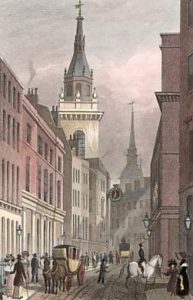
View of Lombard Street in an engraving by T. H. Shepherd (1829). This was the headquarters of the monetary system of England, responsible for the financial ruin of Spanish America.
The economic-financial interests of Great Britain used these societies, Masonic or related, to dissolve and destroy the Spanish Empire, which was a world civilization based on four very firm parameters:
- Philosophical positions.
- Religious demarcation.
- Legal structure.
- Conformation-economic concordance.
Spain was not and will never be an absolutist regime or an iconoclastic hegemony of elementary freedoms for life. Because Spain has a syncretism built by San Isidoro de Sevilla (circa 560-636) in the Council of Toledo (633), on which the Iberian Peninsula was unified as the Spanish people. Such unification was developed, later, on the basis of the congruence of three colossal thinkers of their interdependent axioms: Averroes (1126-1198), Islamic, Maimonides (1135-1204), Sephardic Jew, both from Andalusian Córdoba, and Santo Thomas Aquinas (1225-1274), of Roccasecca, in the Kingdom of Naples, Italy.
27 February 2018
Those named “heroes”, “patriots” or “liberators” both by the “classical” and the “revisionist” historiographies, if they had been deserving of such honorary names, should in the first place have preserved the political geographical globalism of the world structure Spanish Empire. The Spanish Empire had the following positive milestones:
- Language.
- Law: New and Most Recent Compilation of the Laws of the Indies, which establish rights, obligations, and responsibilities for all.
- Religion: in the Spains of America it was Catholic Christianity, juxtaposed, in its anthropological aspect, with the ancestral beliefs of the God-Sun and Mother-Earth.
- Cultural traditions: music, poetry, musical instruments, singing, dancing.
- Sculptural art: cathedrals, Aztec and Mayan pyramids in Mexico and Yucatán; Puerta del Sol in Bolivia and Inca cities of Peru: Machu Picchu.
- Scientific knowledge: medicinal, mathematical, and astronomical.
Instead of maintaining this harmony on which a great civilization could have been built, the secessionists called liberators segmented, decimated, and crushed everything. The bodies, temples of human life, were slaughtered without pause or mercy in fierce and endless civil wars during the 19th century. During the boastful 20th century, hunger, misery, and disease were the vehicles used to continue such destruction.
We have credibly credited how Great Britain destroyed the Spains of America, keeping them subjugated in the 21st century, through fierce neo-colonialism and economic and financial dependence. Let’s recap chronologically at the risk of being repetitive:
- Treaty of Methuen of 1703: in exchange for privilege rates granted to Portuguese wines entering England (against French and Spanish wines), Portugal repeals the Portuguese rates of 1684 on English wool. At the same time, the English acquire the exclusive privilege of trading freely with Brazil and Portugal.
With this franchise, they deposited all merchandise – which they later smuggled into Spain and Spanish America – on the coasts of Portugal and Brazil (1). - Treaties of Utrecht of 1713 and 1714:
- They impose on Spain black trade settlements (ten) in the Spains of America.
- Registered vessels, or English vessels to trade freely in the ports of the Spanish of America.
- They impose on Spain “the most favored nation clause” by which they cannot grant other countries benefits that are not automatically granted to England.
- These franchises allowed the Spanish Empire to be penetrated in its entirety by English smuggling (Muret, 1944: 20-21).
- Plan of 1711: “A proposal for humbling Spain”.
- Response of Spain in 1776:
- July 4: Creation of the United States of America as an independent republic. Action by José de Gálvez.
- August 1: Creation of the Viceroyalty of the Río de la Plata: bi-oceanic territory with 7,200,000 km2 of surface.
- Maitland-Pitt Plan of 1804: operating method to fully carry out the strategic plan for the conquest of Spanish America in 1711. Beachheads: Buenos Aires (Argentina) and Caracas (Venezuela).
- First and Second English Invasions of Buenos Aires and Montevideo in 1806 and 1807: carried out by Beresford and Whitelocke, who are defeated by Santiago de Liniers, Juan Gutiérrez de la Concha, Martín de Álzaga, and Felipe de Sentenach.
Beresford organizes two masonic lodges: “The children of Hiram” and “The free ones of the south” in the house of Antonio de Escalada, future father-in-law of José de San Martín (Ferns, Harry S., 1968). - May 25, 1810: Coup d’état and removal of the viceroy, carried out by the British frigates Pitt, Misletoe, and Mutin, and by the English subject (undercover agent) Cornelio Judas Tadeo Saavedra, who led the Patricios Regiment, the most powerful.
The Board receives Admirals De Courcy and Fabian in the first audience. They impose that the Edict of Free Trade with England and only with England – which had expired on May 18, 1810 – has no expiration date. The British ships bunched their masts and launched an artillery salvo.
The flag of the Board is the English flag joined to the Spanish (Williams Álzaga, 1966: 28). - October 8, 1812: San Martín and his blood brother -Alvear-, together with the Lautaro Lodge dismissed the First Triumvirate and force the appointment of Nicolás Rodríguez Peña, Antonio Álvarez Jonte, and Juan José Paso. Thus arises the Second Triumvirate resulting from the alliance of the Lodge and Military Power. It is the first coup in Argentina. The Pitt-Maitland Plan of 1804 begins to unravel.
- July 9, 1816: the Congress is summoned in Tucumán (Argentina) to dictate a constitution, unexpectedly declares the independence of South America.
Objective: England, the mediator between European Spain and the Spains of America, prevents Russia from helping European Spain to put an end to the systematic secession that Great Britain organized. Thus the fragmentation of the Spains of America proceeded, putting obstacles to their reunification. - February 2, 1825: Great Britain imposed in four months the Treaty of Friendship, Commerce, and Navigation to the Spains of America. For the same it was provided that:
- England would be the world’s workshop and Spanish America, its farm. This means: being a supplier of raw materials without added values, and a borrower.
- Great Britain acquires the exclusive right to navigate inland rivers, with access to places and properties throughout Argentina.
- All overseas navigation of the Spains of America must be carried out exclusively with English ships (art. 7 of the treaty). In this way, Great Britain mobilizes exclusively: warehouse content, freight, insurance and credits from all of Latin America. This was equivalent to approximately one-third of the world’s money supply.
- Regime of article 11 of the Treaty: in case of war with Great Britain (for example, the Falklands War in 1982) Argentina is prohibited from interrupting trade with England.
The Bank of England, the elemental foundation stone of these reflections
The origins of the British banking movement “lie in the interest-bearing loans made by the Jewish bankers who, when expelled in 1290, were replaced in such tasks by merchants from the Lombard states of Italy who settled in London in the vicinity of the street that today bears his name”( 2). This street has since been called Lombard Street (3) and from then on it was the headquarters of the London money market.
Around 1500, on the occasion of the discovery of America, Venetian bankers settled in London. This invasion was immortalized by William Shakespeare in his work, anathema of Greed, The Merchant of Venice.
During the reign of Elizabeth I (1533-1603), English corsairs, such as Sir Francis Drake, flooded the London money market with their criminal looting against American cities and Spanish ships.
During this reign Scotland was annexed to England and absolute maritime supremacy was acquired. Under the regime of the English Republic of Oliver Cromwell (1649-1659) Jamaica was conquered and the Navigation Act was issued, by which everything that entered or left Great Britain had to be transported in English ships. In other words, Great Britain prohibited import and export trade from being carried out with other vessels that were not their own.
In 1688 the great English revolution took place, eradicating James II Stuart from the throne, appointing William of Orange of Holland as king.
This caused that the English, Lombard, and Venetian bankers were joined by the Dutch bankers. All of these monetary groups were established in London. In 1694 the Bank of England was created, a financial entity with inexhaustible resources for all British conquests:
- Domination of Portugal by the Treaty of Methuen in 1703.
- Treaties of Utrecht of 1713 and 1714: penetration by the franchises that led to smuggling on a large scale in Spanish America.
- Incorporation of Canada.
- Conquest of India around 1770 by the English general Lord Robert Clive (1725-1774).
- Economic and financial conquest of the Spains of America between 1810 and 1825, etc., etc.
The Bank of England is today, 2009, the largest and most powerful in the world, as demonstrated by the G20 meeting in April of this year.
Thus was formed the British Empire, today called the Commonwealth, with 64 countries. These include Australia, New Zealand, South Africa, India, and Canada. The territory covers 30 million square kilometers and is home to 1.6 billion inhabitants.
To all the above we must add the total dependence that Hispanic America has on Great Britain in economic and financial terms. This neocolonialism causes that the comodum, that is to say, the gains, go towards London; On the other hand, the periculum, the losses, are for Latin America: hunger, unemployment, lethal diseases, illiteracy and ignorance, malnutrition, rickets, drugs, and AIDS.
Notes
Muret, Pierre (1944) La preponderancia inglesa, Ed, Minerva, México, p.18.
Watson, Guy M. (1960) El Banco de Inglaterra, Ed. Centro de Estudios Monetarios Latinoamericanos, México, p.11.
Bagehot, Walter (1968) Lombard Street. El mercado monetario de Londres, FCE, México.
Share this article
On This Day
- 1648 Pedro II of Portugal is born.
History of Spain
26 August 2020
27 January 2021
Communism: Now and Then
23 December 2022
28 July 2021
